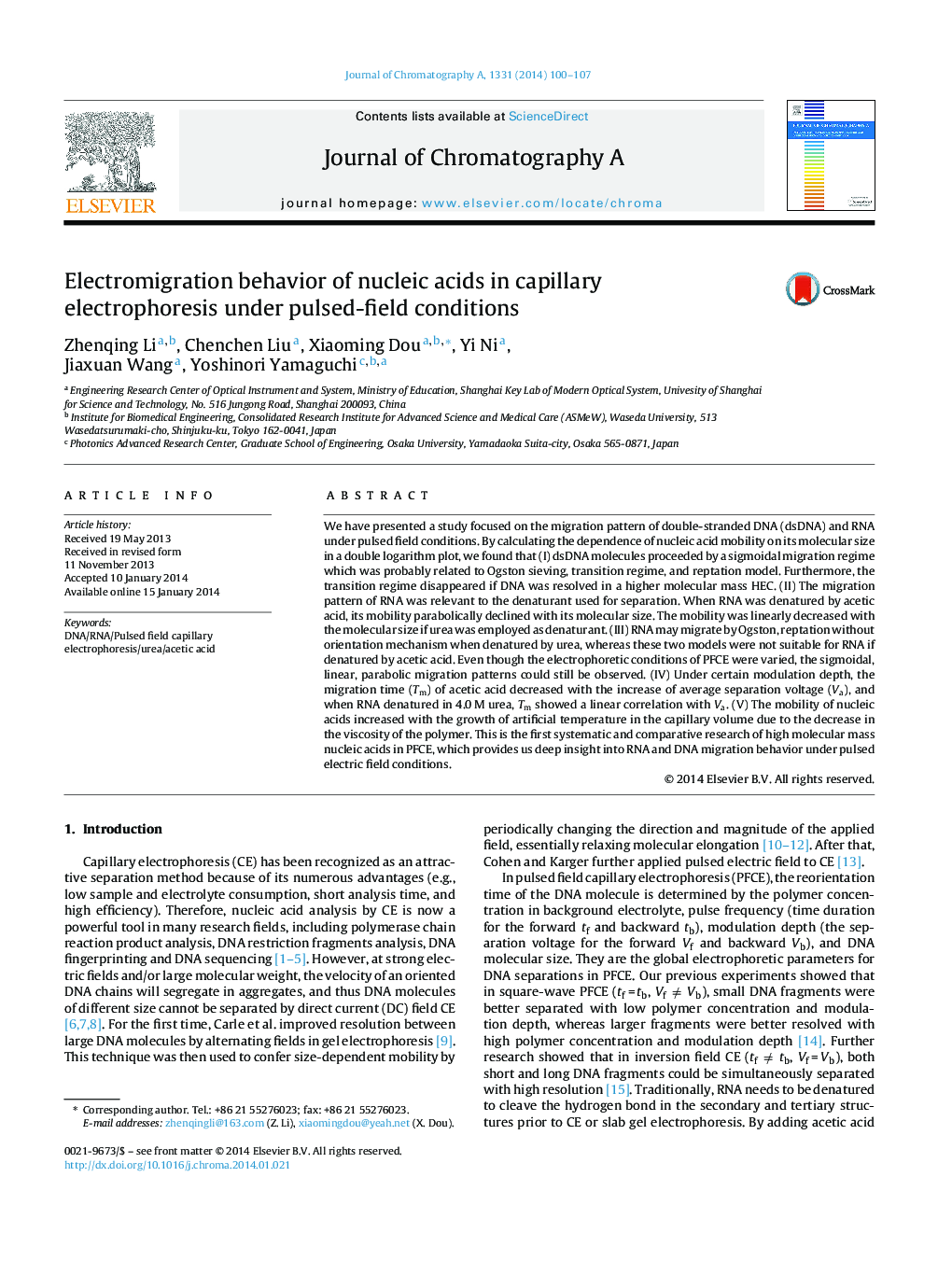| Article ID | Journal | Published Year | Pages | File Type |
|---|---|---|---|---|
| 7613659 | Journal of Chromatography A | 2014 | 8 Pages |
Abstract
We have presented a study focused on the migration pattern of double-stranded DNA (dsDNA) and RNA under pulsed field conditions. By calculating the dependence of nucleic acid mobility on its molecular size in a double logarithm plot, we found that (I) dsDNA molecules proceeded by a sigmoidal migration regime which was probably related to Ogston sieving, transition regime, and reptation model. Furthermore, the transition regime disappeared if DNA was resolved in a higher molecular mass HEC. (II) The migration pattern of RNA was relevant to the denaturant used for separation. When RNA was denatured by acetic acid, its mobility parabolically declined with its molecular size. The mobility was linearly decreased with the molecular size if urea was employed as denaturant. (III) RNA may migrate by Ogston, reptation without orientation mechanism when denatured by urea, whereas these two models were not suitable for RNA if denatured by acetic acid. Even though the electrophoretic conditions of PFCE were varied, the sigmoidal, linear, parabolic migration patterns could still be observed. (IV) Under certain modulation depth, the migration time (Tm) of acetic acid decreased with the increase of average separation voltage (Va), and when RNA denatured in 4.0Â M urea, Tm showed a linear correlation with Va. (V) The mobility of nucleic acids increased with the growth of artificial temperature in the capillary volume due to the decrease in the viscosity of the polymer. This is the first systematic and comparative research of high molecular mass nucleic acids in PFCE, which provides us deep insight into RNA and DNA migration behavior under pulsed electric field conditions.
Related Topics
Physical Sciences and Engineering
Chemistry
Analytical Chemistry
Authors
Zhenqing Li, Chenchen Liu, Xiaoming Dou, Yi Ni, Jiaxuan Wang, Yoshinori Yamaguchi,
